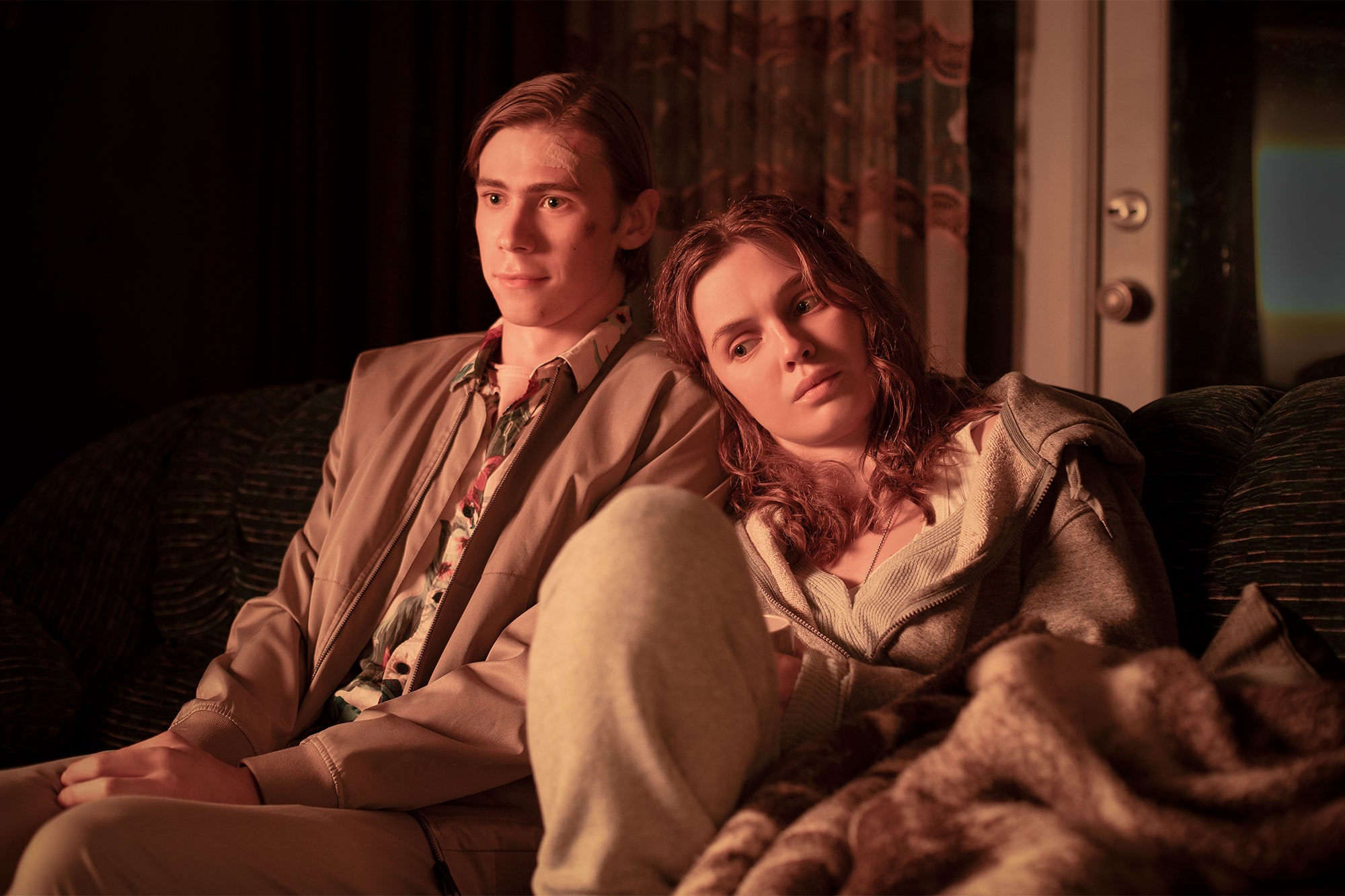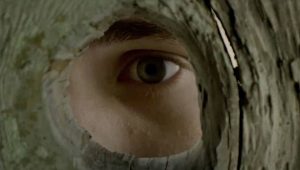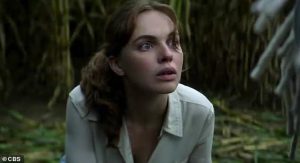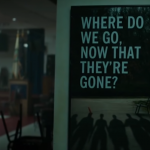The Stand 1×1 Review: The End

‘The End’ throws us right into the most uncomfortable element of The Stand; we are experiencing a story about a pandemic during a pandemic. Brace yourself.
I was curious how they were going to confront the issue of the pandemic as it’s fairly critical in the plot, especially in the setup of the world the story takes place in. Not everyone can handle a story about a pandemic during a real life pandemic and I feared a slow reveal would trigger a lot of anxiety for folks who may not be aware of what this story is about. But ‘The End’ starts with a flash forward that sets the record straight, showing some of the worst of it in graphic detail (that honestly made me quite nauseous). Once it’s clear that this is what it’s about, and those who don’t want to experience can back out, we flashback five months and begin the story earlier, though still not quite at the beginning.
 Bouncing back in time, we begin to tackle two topics simultaneously: introducing our main characters and showing the early spread of the disease. First up is Frannie Goldsmith, whose father is seemingly suffering from a cough as he works in the garden. This is the first clue in the present timeline that a virus is taking hold, but it’s moderate enough that society seems to be generally functioning as normal. Most people don’t seem to be taking it seriously at this stage, which is uncomfortably familiar.
Bouncing back in time, we begin to tackle two topics simultaneously: introducing our main characters and showing the early spread of the disease. First up is Frannie Goldsmith, whose father is seemingly suffering from a cough as he works in the garden. This is the first clue in the present timeline that a virus is taking hold, but it’s moderate enough that society seems to be generally functioning as normal. Most people don’t seem to be taking it seriously at this stage, which is uncomfortably familiar.
On the other side of the fence is Harold Lauder, who is creepily watching them through a hole in the fence before promptly being beat up by some neighborhood bullies. It’s clear that Harold is a little different from most folk. He’s strange and inappropriate in ways that make him a target to others. At this point he’s framed as someone who has an obvious crush and doesn’t know how to deal with it in an appropriate way, but at the moment he’s not an outright malicious person. The harm he causes with these awkward interactions is passive and contained. We can see that begin to change as the pandemic takes hold, however.
When Lauder leaves from his weird peeping-tom excursion, he heads to the local boardwalk, where the true nature and scale of the pandemic starts to become apparent. Here is where ‘The End’ starts to get uncomfortably similar to our real world situation, even becoming potentially troubling for those of us who actually enjoyed watching disaster films as a way to cope with the pandemic. Some of the words being said from what is presumably media broadcasts reflect our reality a little too closely. One reporter says that the Governor is considering a ban on all public gatherings as the flu season has come early, but she pushes back on the order by saying she’d never let a flu keep her from celebrating the Fourth of July.
Part of me thinks this voice over bit was added after the fact, as it’s far too close to what we’re going through right now and doesn’t reflect how many of us assumed society would react. While I tend to be pretty pessimistic about society, most fiction seemed to depict humanity coming together to avert an apocalypse. We had some hope that people would take the virus seriously, but conspiracy theories and complete disregard for public safety are running rampant. We now look back at stories like Contagion and laugh at how well behaved most people actually were in that situation. And without that voiceover, one could assume people were taking the threat seriously here, too, but that small bit makes it seem like perhaps the virus could have been contained if people paid attention to the warnings.
If this line was in the original script, I am impressed with their intuitive writing. I don’t recall this theme in the book (granted, I haven’t read it in years) or the original series. If it was added, I’m ever so wary that they could eventually go the same way the Michael Bay project went, and start treating our real world situation as inspiration for entertainment. So far, I didn’t find the inclusion of this one line offensive, but I will be keeping a critical eye on the series if they choose to continue to do this. It has to be done very carefully, lest it feels like they’re making light of the situation.
Thankfully this mini-series was filmed before the pandemic really took off, so outside of late additions through voice overs like that, I don’t see them adding too many more nods to our current situation. In fact, I don’t even know if this was a late addition, but it’s startlingly prescient if it wasn’t. The important thing is that I’m still comfortable watching the show at this point despite the similarities, but they are on thin ice and one wrong decision could shatter my precarious support of the series. I’m watching you, The Stand. I’m watching you closely.
We’re also introduced to Stu Redman in ‘The End,’ who in turn introduces us to the original patient zero through flashbacks. In the original miniseries, we follow patient zero from the lab to Arnett, Texas, but here we only get this story through flashbacks as it seems they’ve chosen to follow a non-linear format for storytelling. This is not a remake of the original miniseries, so we can’t exactly expect it to play out scene by scene. It takes the story from the book and is shuffling it in a way that makes sense to the creators for their purposes. I do, however, miss the slow pan over dead bodies as ‘Don’t Fear The Reaper’ plays, though. But that’ll just have to be something from the original series that’ll remain iconic and unique to that adaptation alone.
This story moves fast due to this format, however, and we don’t really linger on the illness for long. I feel like both the book and the original series spent much more time watching it all play out as it followed the story basically as events happened. Whether this is intended to race past this clearly uncomfortable and poorly timed pandemic segment of the story, or if the original script did this as well, I can’t be sure. Either way, at just 16 minutes in, most people seem to be dead and the survivors are seeking each other out for companionship.
That’s so fast, dude. We don’t really see these characters interacting with their loved ones or see them slowly losing them to the plague. Important character moments are lost and feel the full weight of our protagonists losing their entire families. We don’t see much of their loved ones outside of one scene each for Frannie and Harold’s families, and a brief scene in Arnett. That’s not enough to really flesh these characters out and make them seem real, or to feel their loss on a deeper level.
Maybe the creators of the show decided we really don’t need that sort of emotional turmoil right now. And I can’t really fault them for that decision. If they sped this portion of the story up out of sensitivity, I applaud them because this really is very poor timing for an apocalyptic narrative involving a virus. In any other situation, I would be fairly upset that these changes felt rushed, but not this time. Maybe someday we’ll have an original cut that focuses on these important character moments. I always gravitate more towards character focused stories than plot driven stories, and erasing a large part of who these people were before the pandemic really damages that element.
Of course, I’m just speculating that this was changed. It’s very possible both the weirdly prescient voice over and the rushed virus plot were part of the original script, in which case my analysis is obviously off. Still, with the information I have available now, these are my thoughts on it. I would love to pick the brains of the creators on this, though. I can’t find any good interviews that go over those details, but if anyone has a link to one, please drop it below! I’m dying to know how they changed things over the past nine months, if they changed things at all.
One part of this adaptation that I’m fairly pleased with is the inclusion of the actor Hamish Linklater, who plays a similar character in Legion. In The Stand he plays Dr. Ellis, who is basically tasked with coordinating care for Stu Redman and finding out why he seems to be immune from the bug. Like his character in Legion, he’s not exactly a bad guy, even though he feels like an antagonist due to his authoritative nature and role in keeping our protagonist captive while science experiments are run on him. He’s not a good character, of course, but he seems nice enough for the role he’s been given. He’s a kind prison warden, basically. Which is a complex character to portray. Linklater just naturally looks like a guy who has a job to do, but is actually decent if you look past his authoritarian adjacent position. It’s a very precise look that he somehow nails perfectly.
Honestly, I love Linklater and I’m glad he was given this role even if he’s being somewhat typecast as ‘nice guy adjacent to bad guys.’ If only he would have lived longer here… But most people die in The Stand, so that’s just what has to happen here. Hopefully Linklater is happy and healthy in the real world despite our own raging pandemic.
 With the rushed virus plot, we jump into the dream sequences involving Mother Abigail and Randall Flagg extremely fast. Fran sees a vision of Mother Abigail in a wheat field while Harold sees Flagg in the desert. Not much context is given for these flashbacks, but it’s apparent immediately, whether you read the book first or watched one of the mini-series first, that they represent the very basic concepts of good and evil. Once you get past the pandemic setup, that’s truly what The Stand is about, and with the jumbled way they are attacking the story, we’ve already arrived at the beginning of the exploration of that theme.
With the rushed virus plot, we jump into the dream sequences involving Mother Abigail and Randall Flagg extremely fast. Fran sees a vision of Mother Abigail in a wheat field while Harold sees Flagg in the desert. Not much context is given for these flashbacks, but it’s apparent immediately, whether you read the book first or watched one of the mini-series first, that they represent the very basic concepts of good and evil. Once you get past the pandemic setup, that’s truly what The Stand is about, and with the jumbled way they are attacking the story, we’ve already arrived at the beginning of the exploration of that theme.
‘The End’ also advances incredibly fast towards the society the survivors have set up, though we aren’t really given much context there either. At first it felt like yet another flashback, but then Harold and Stu interact and we realize we’ve once again been thrown forward, seemingly to the moment where the episode began. The survivors have built a society complete with a little food kiosk and a body burial crew. And Frannie is pregnant. This will obviously not go over well.
This mini-series is set to be nine episodes long and with the quick pace that it’s moving, I’m not sure how it’s going to fill in that time, unless they continue to rely on flashbacks and non-linear storytelling as they did here in the first episode. If they do that, however, we may have a prolonged focus on the pandemic, which feels like its the opposite of what the showrunners are aiming for. Then again, maybe having these bits in smaller doses will help make the eerie timing of the show easier to cope with. I have no idea. If trying to make the pandemic not hit as hard to viewers isn’t the reason for this jumbled storytelling, I’m very confused.
This series has an uphill climb. The non-linear narrative and the focus on a pandemic are only the beginning of the problems it has to face. The Deaf community is bringing up the very valid issue of casting a hearing actor for the part of Nick Andros, and there’s controversy about the casting of Amber Heard due to the abuse situation. Either one of these is enough reason to not watch this show, but I decided I owe one of my favorite books being adapted a chance. If the non-linear storytelling continues to make it feel disjointed, however, I may have to give up. The CBS All Access subscription is too expensive for one show with this many problems. And besides, I’m having consistent glitches with the app and their tech support department seems to be ignoring me, so that’s not winning them any points either.
For now I’m going to give this show a few more weeks before giving up on it. I’ll give them the benefit of the doubt about the weird arrangement of the story, but my enjoyment of the show is fairly conditional right now. It really needs to bring the story home next week.
Author: Angel Wilson
Angel is the admin of The Geekiary and a geek culture commentator. They earned a BA in Film & Digital Media from UC Santa Cruz. They have contributed to various podcasts and webcasts including An Englishman in San Diego, Free to Be Radio, and Genre TV for All. They identify as queer.
Help support independent journalism. Subscribe to our Patreon.
Copyright © The Geekiary
Do not copy our content in whole to other websites. If you are reading this anywhere besides TheGeekiary.com, it has been stolen.Read our







1 thought on “The Stand 1×1 Review: The End”
Comments are closed.